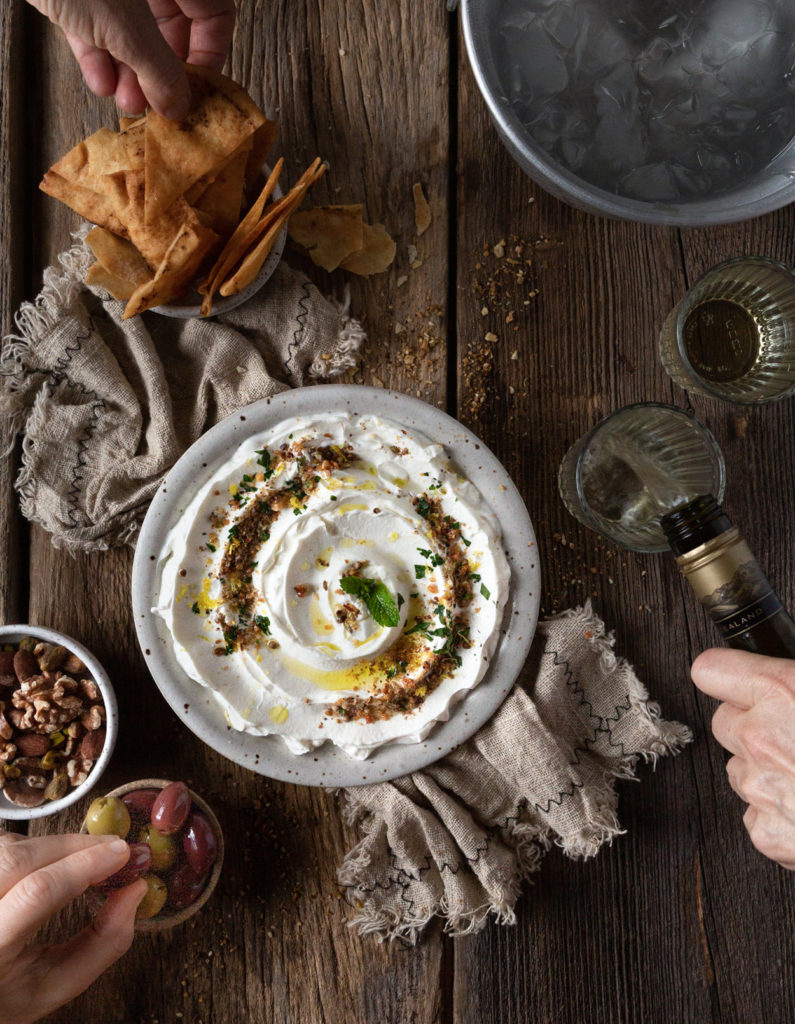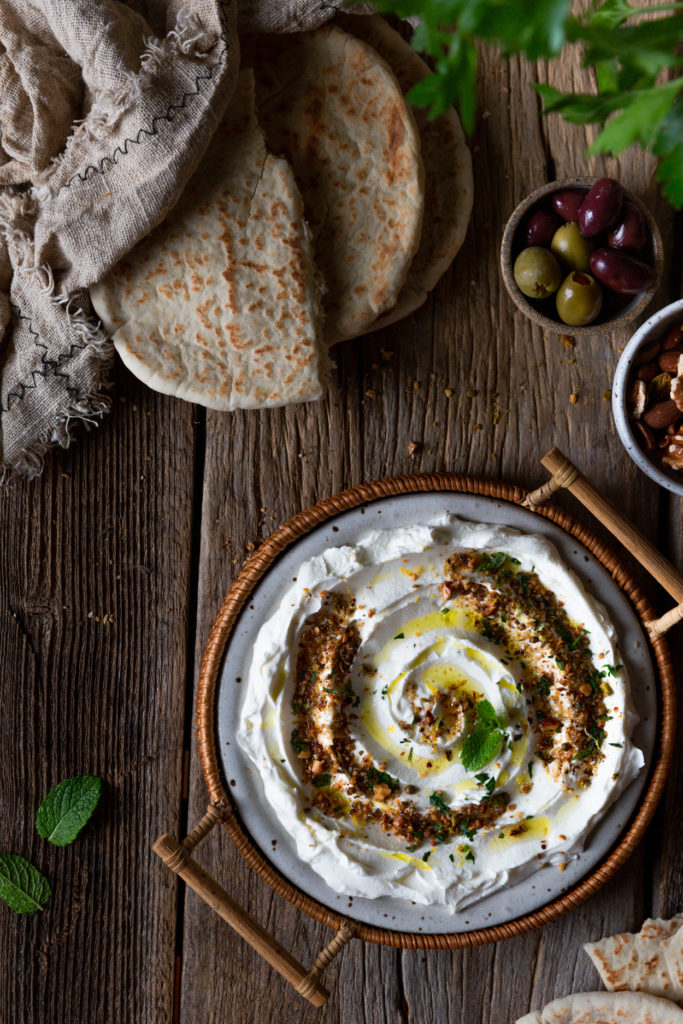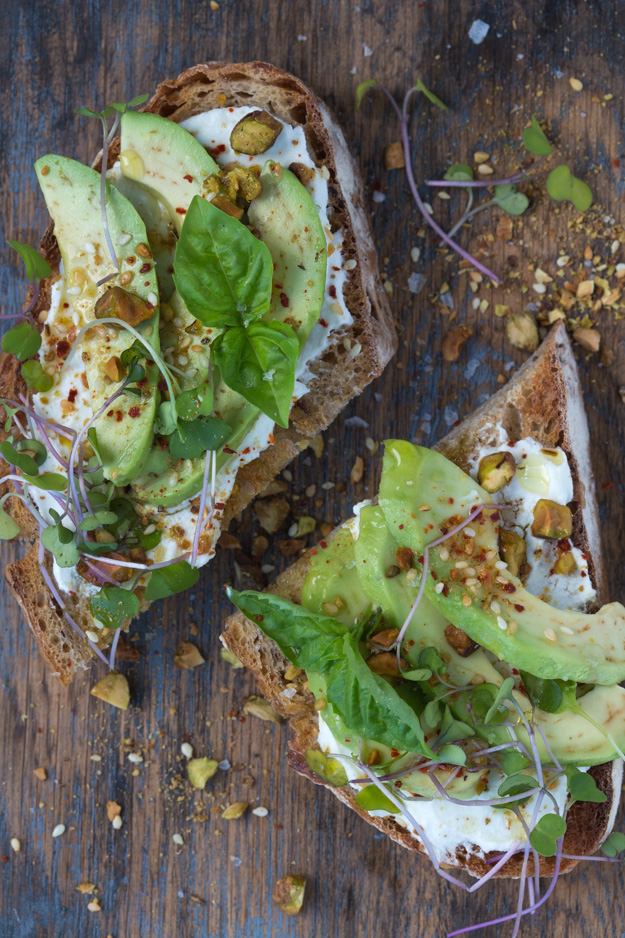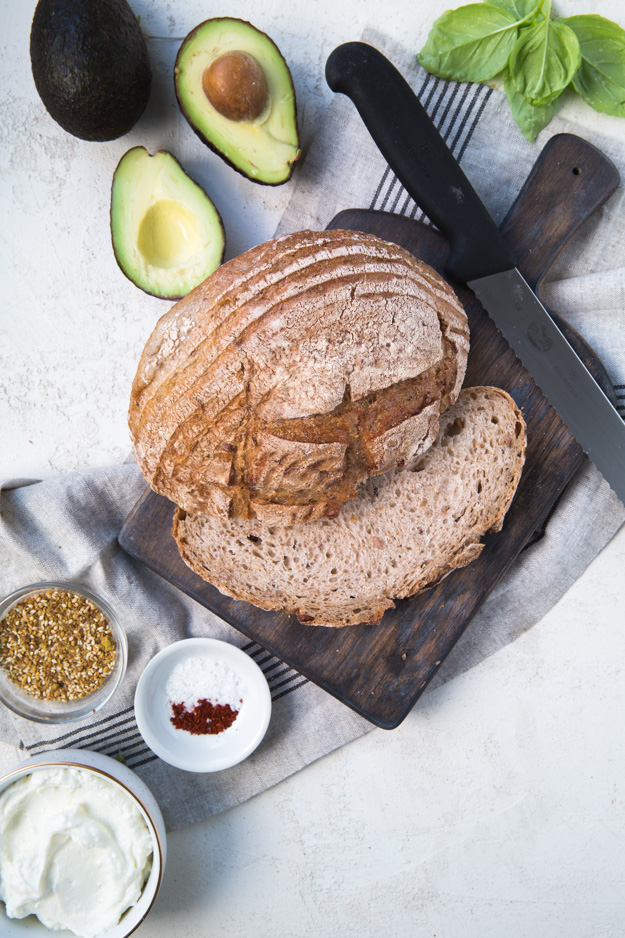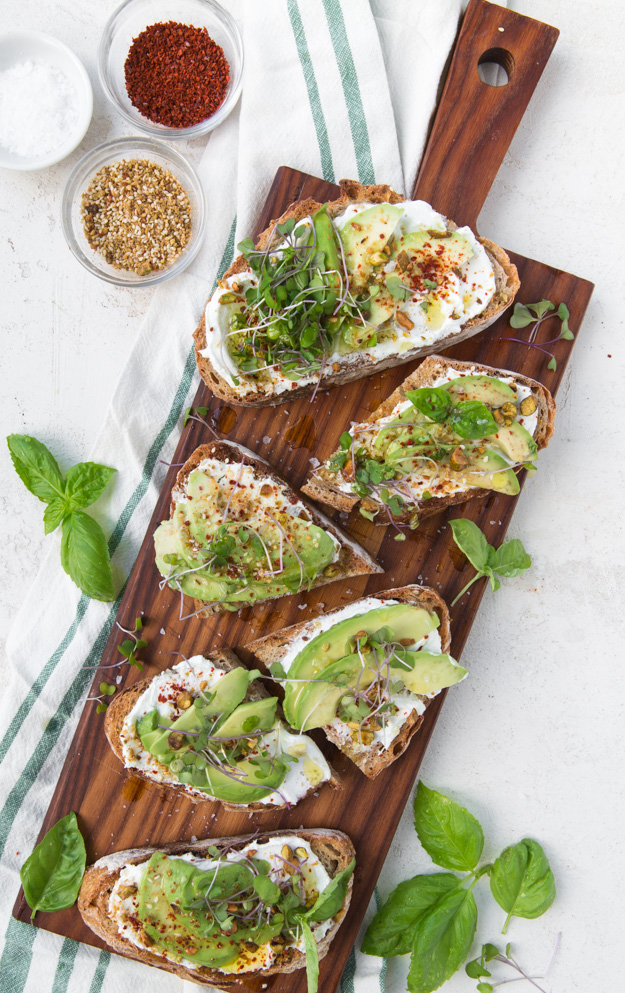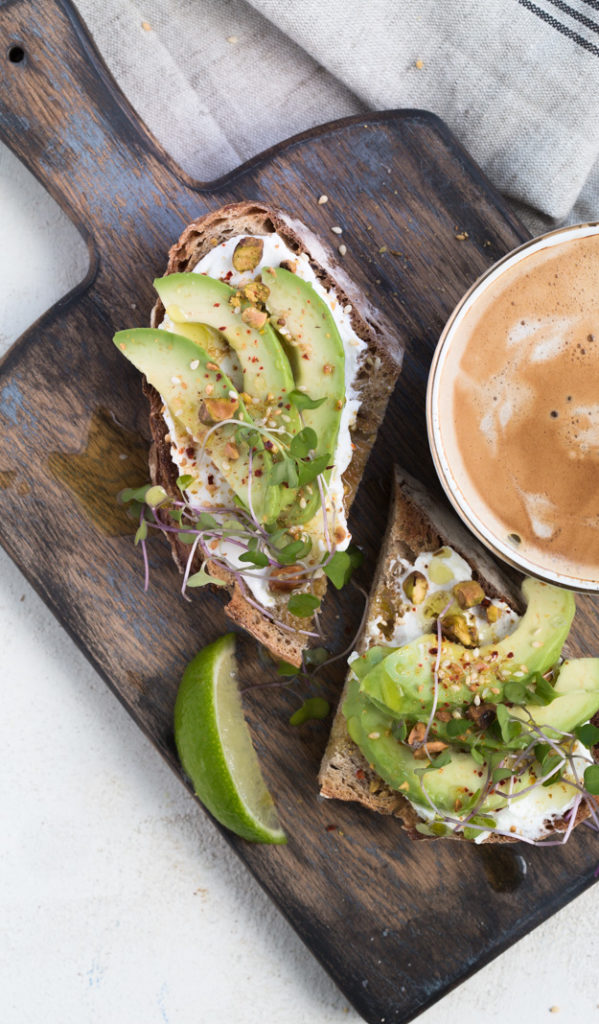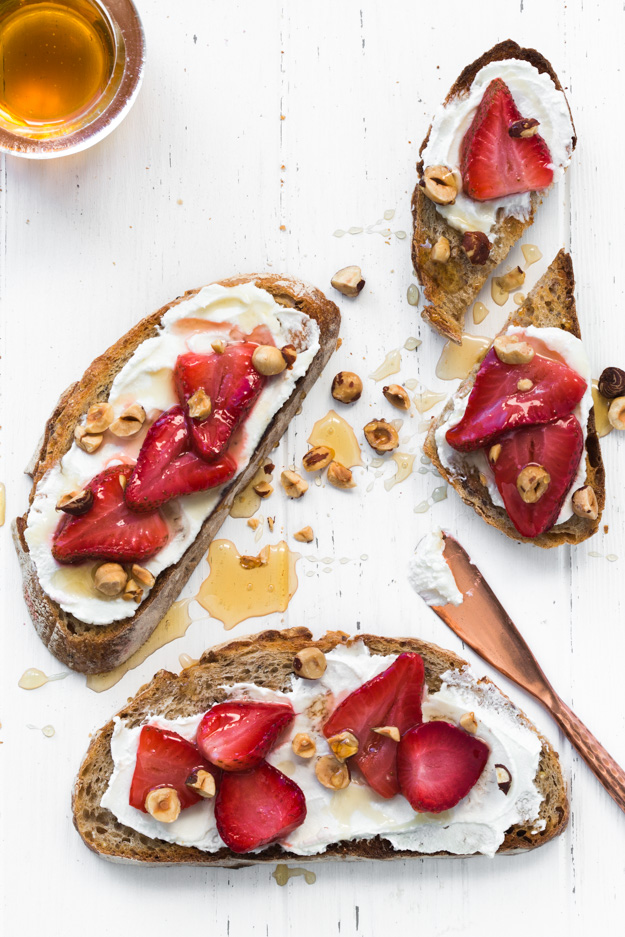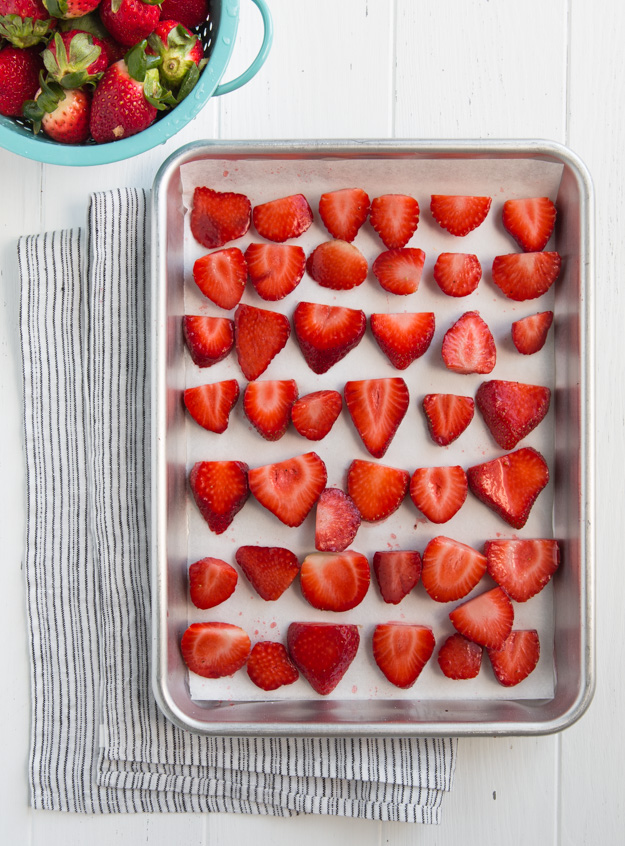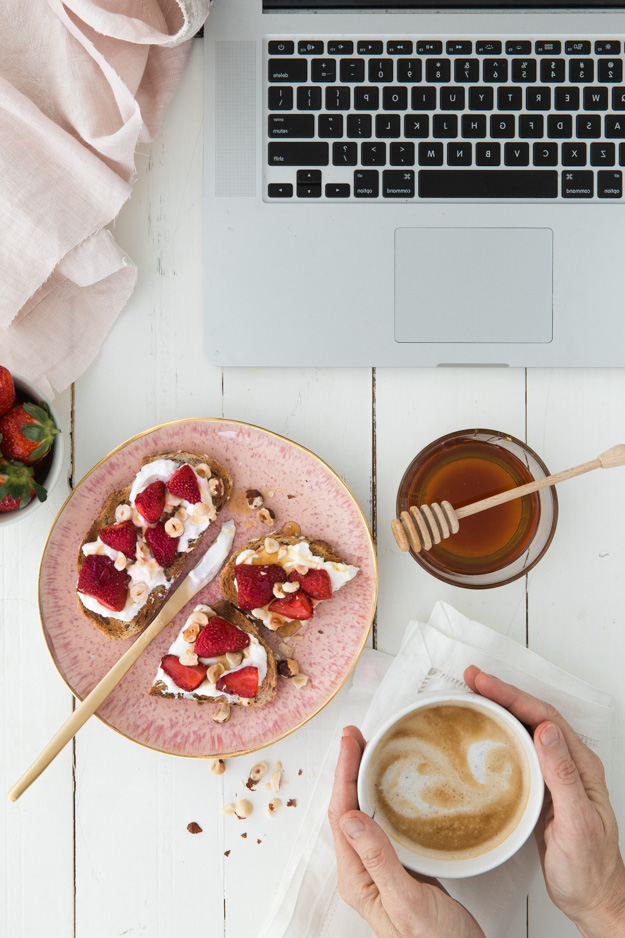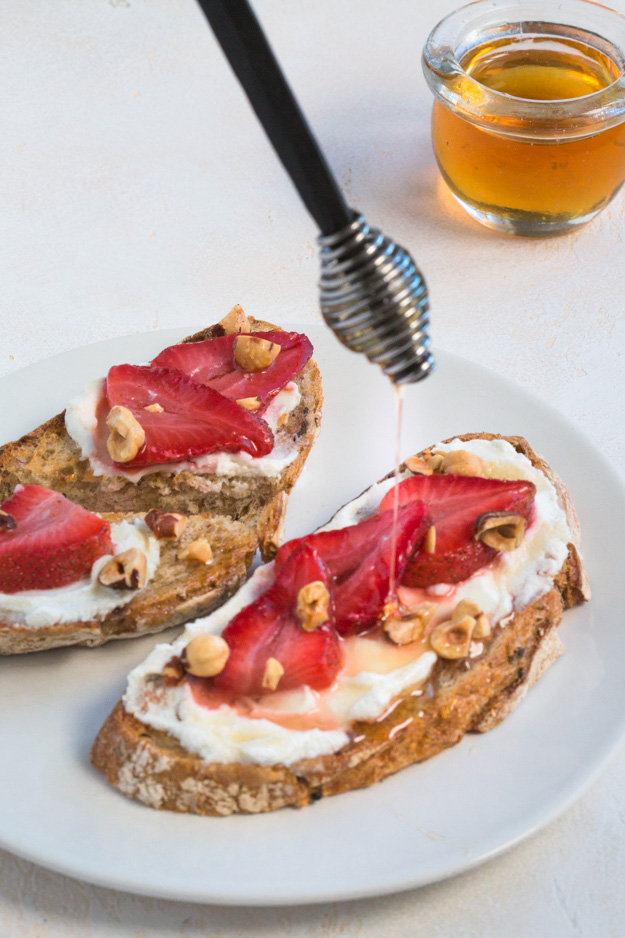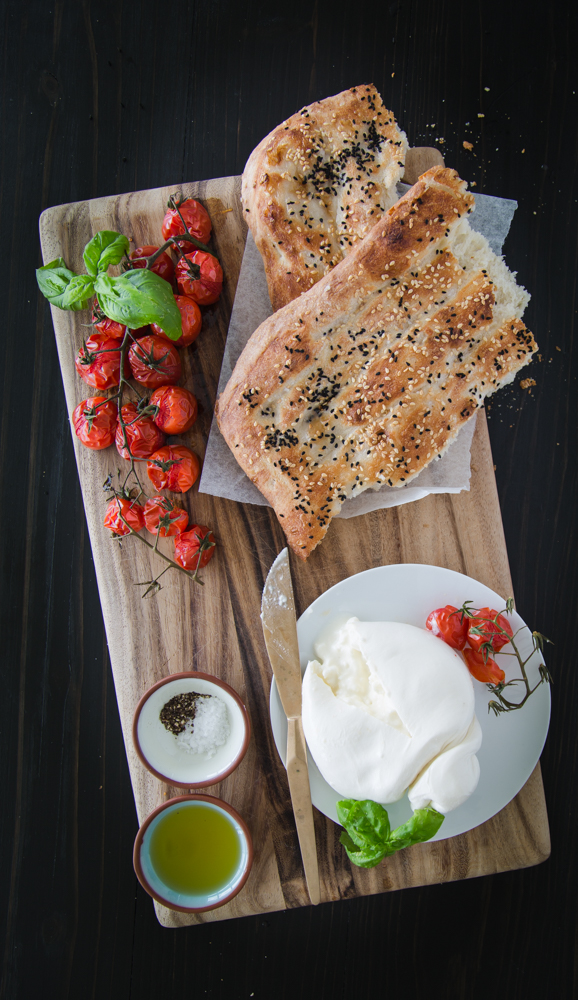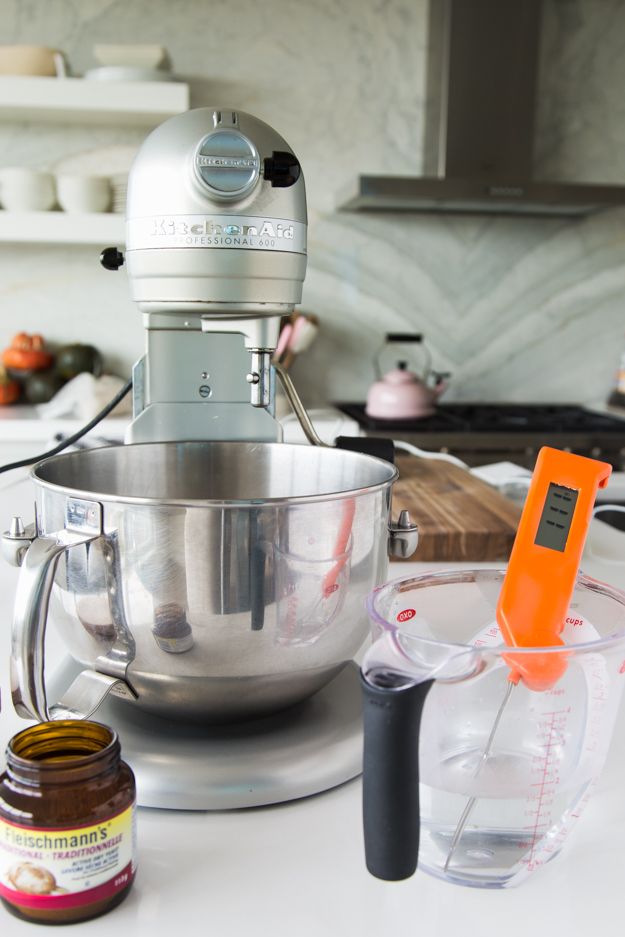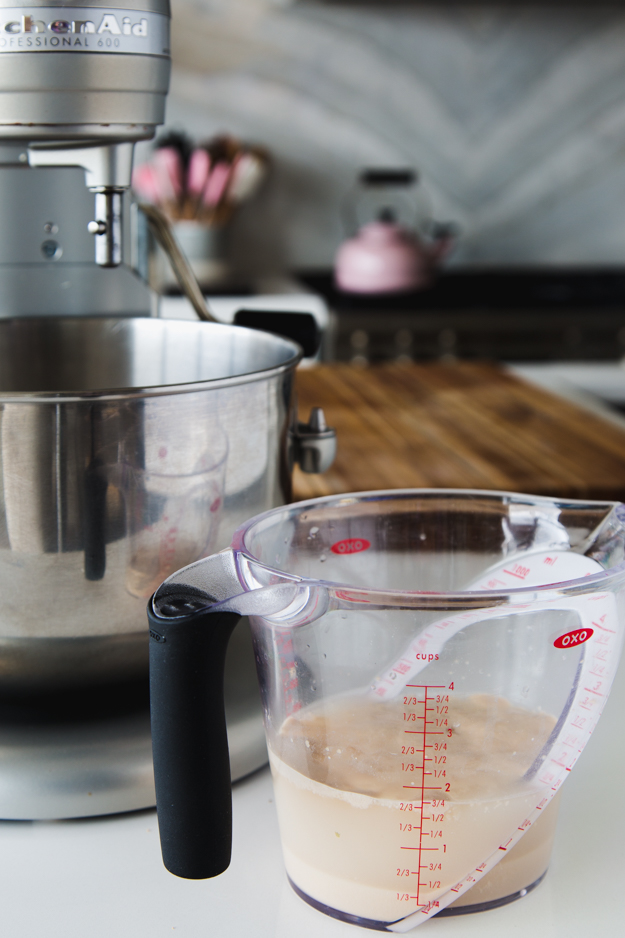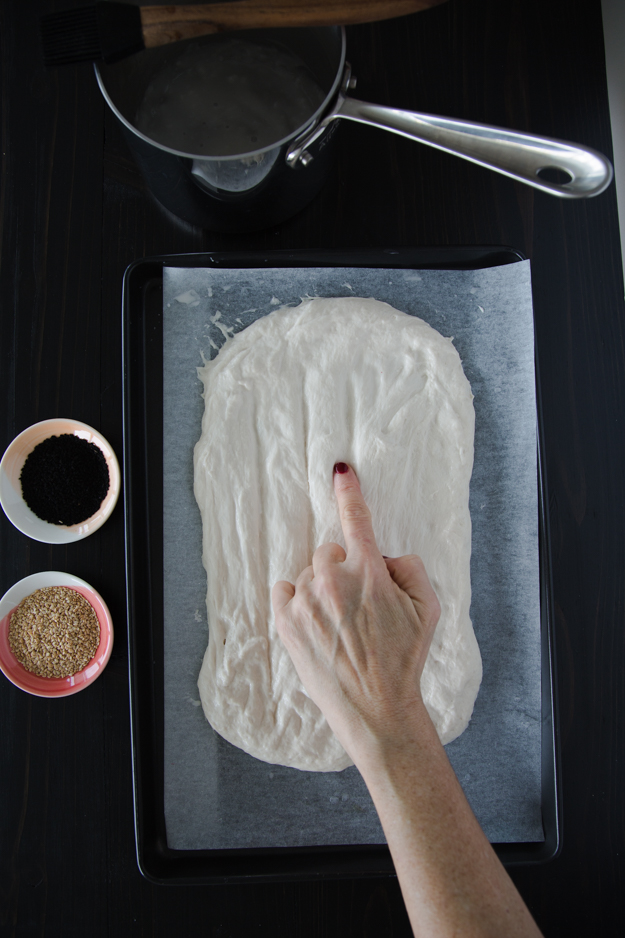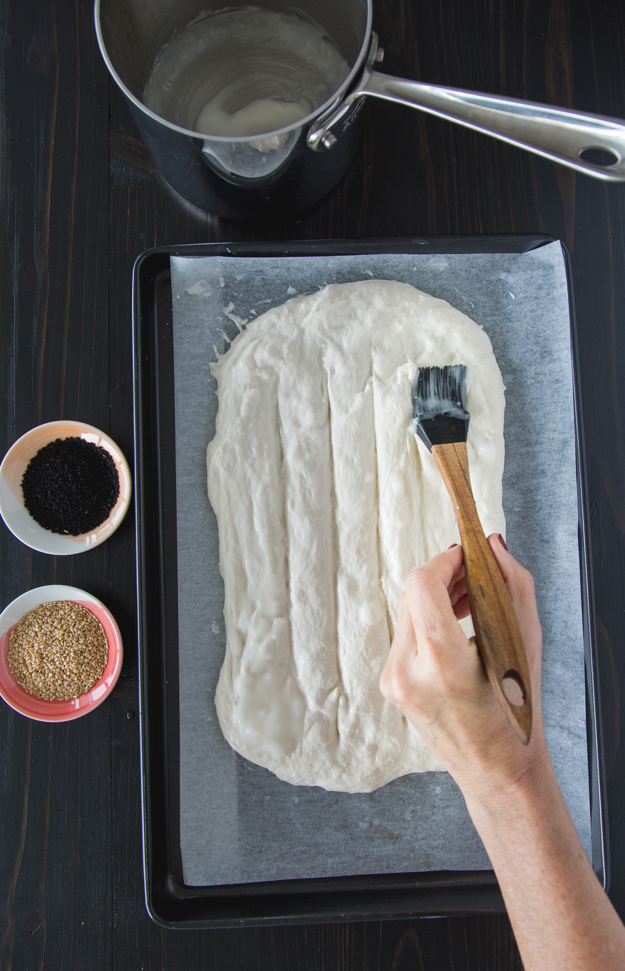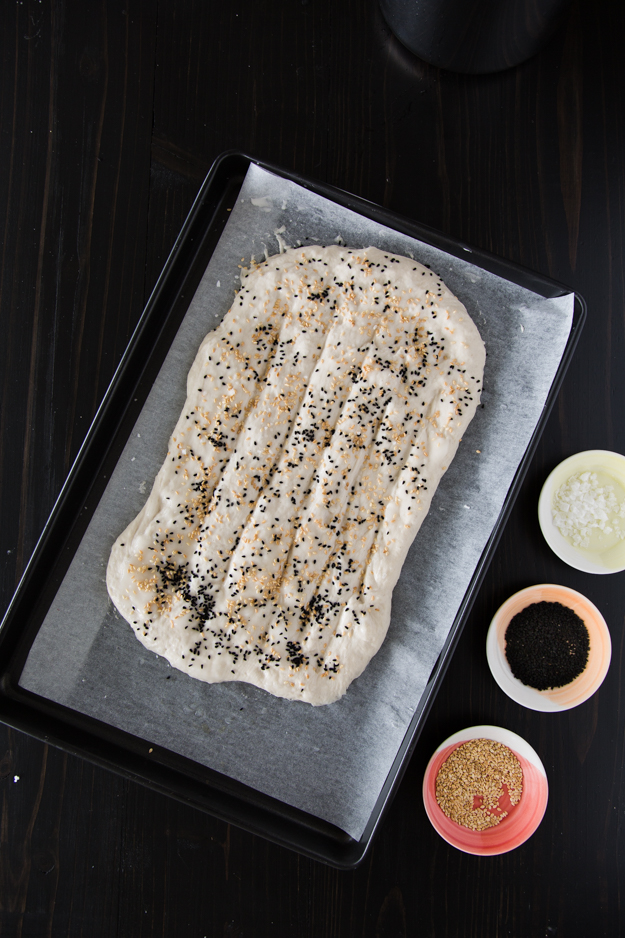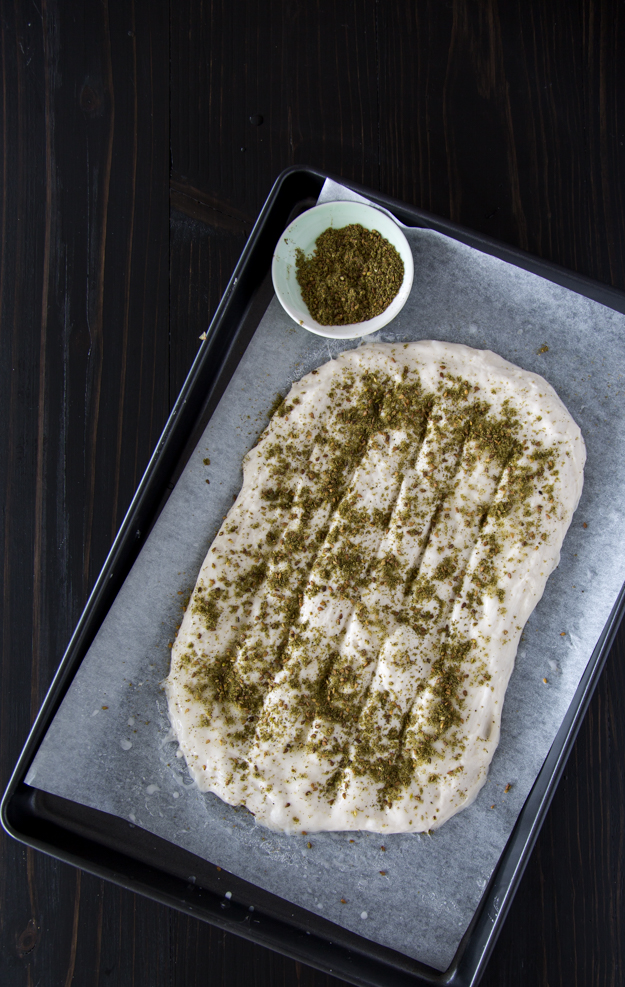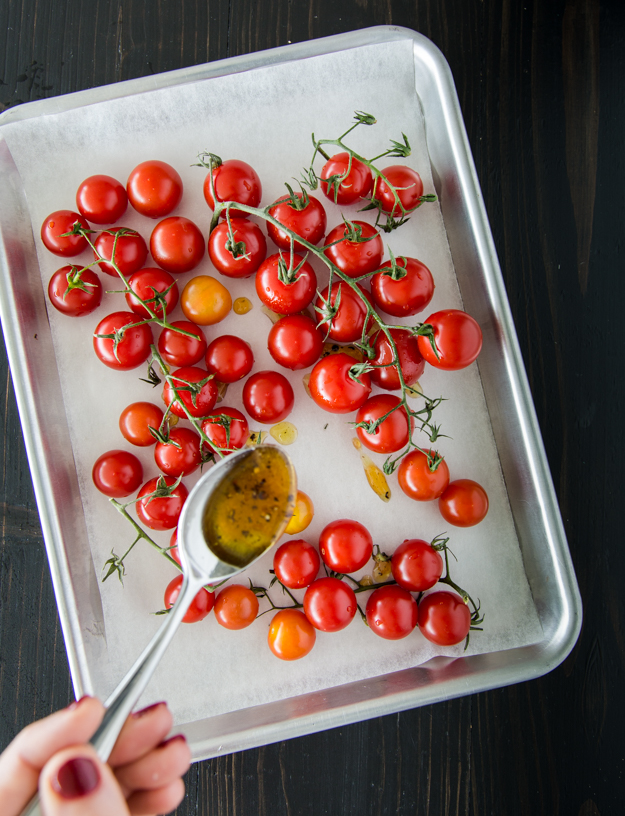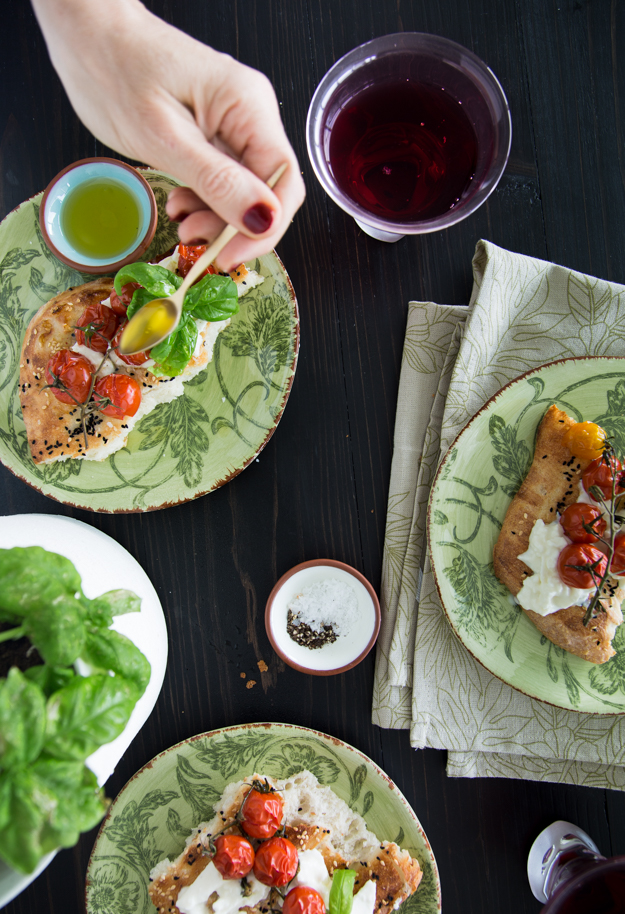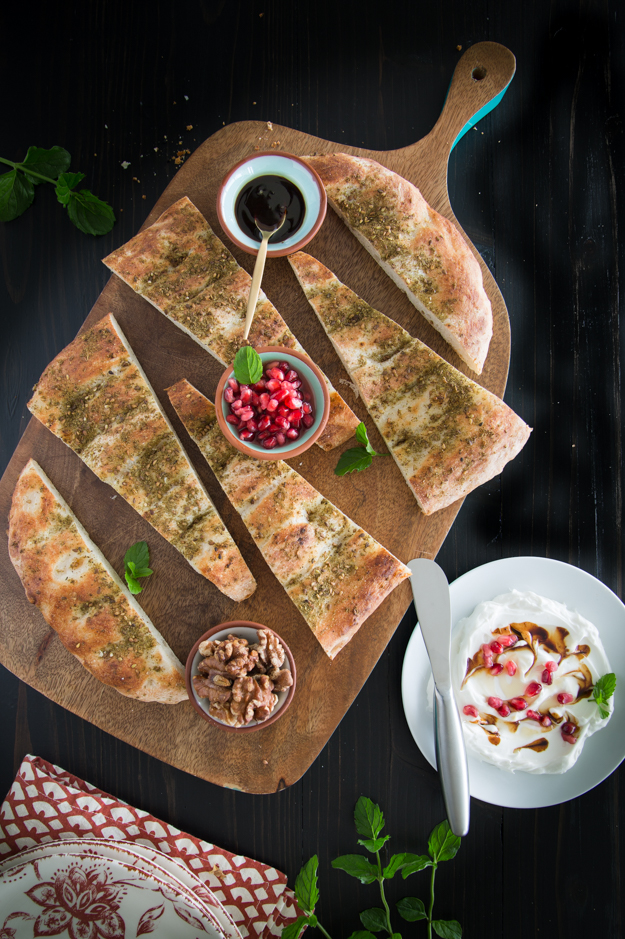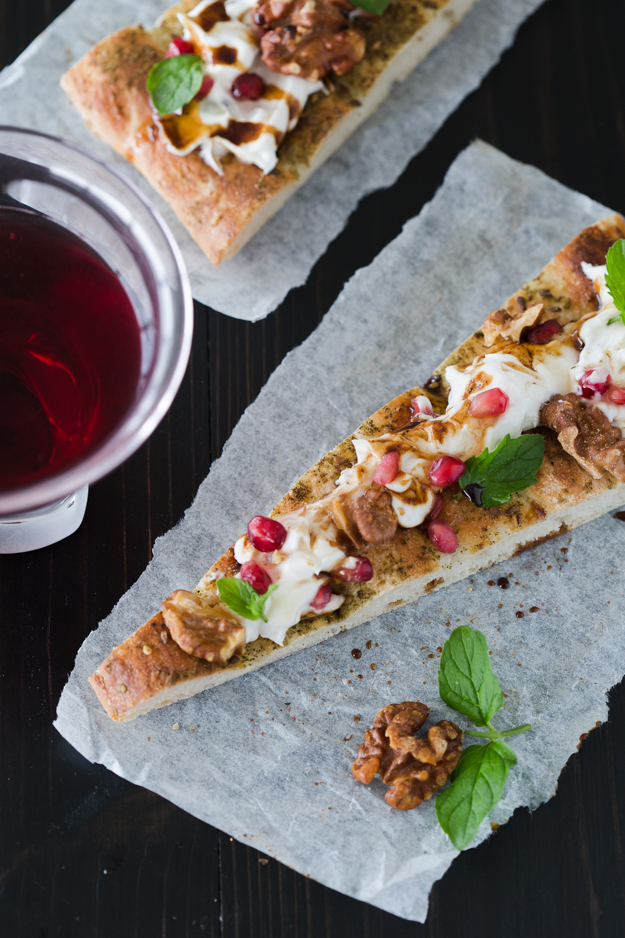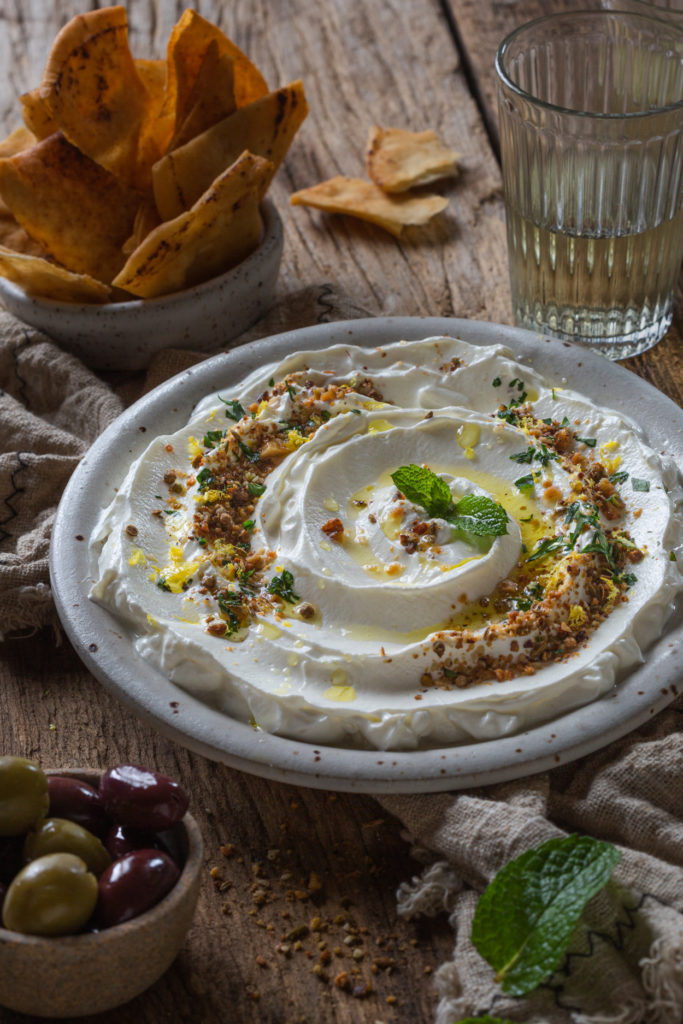
Move over hummus, there’s a new dip in town. Bold statement, I know, but hear me out. Labneh is essentially yogurt strained past the point of even Greek yogurt, until it is ultra-thick. Middle Eastern in origin, it is often referred to as yogurt cheese. Lush and creamy, the texture is somewhere between cream cheese and fresh chevre.
If there is a Middle Eastern store in your area, you can probably buy labneh. If not, it’s easy to make your own. Mix whole milk (5%) plain yogurt (not Greek) with some salt, and strain it in cheesecloth for 24-48 hours.
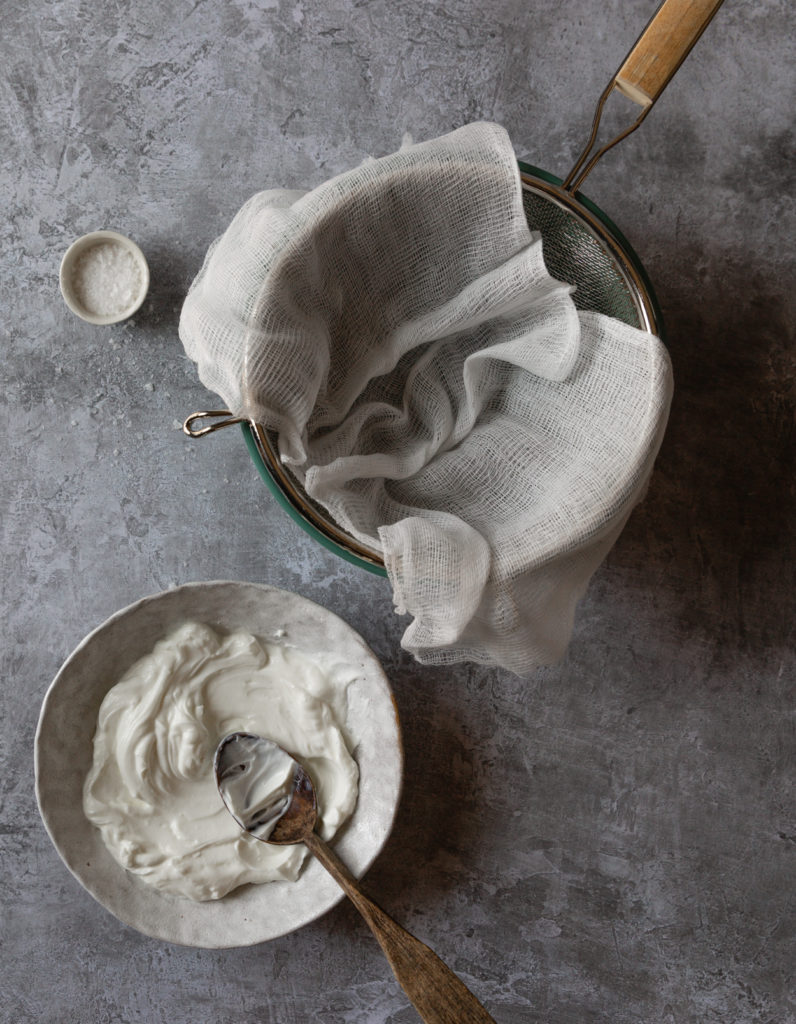
Labneh is so versatile. You can spread it on toast, drizzle with honey and toasted hazelnuts and have it for breakfast. It’s a great substitute for mayo as a sandwich spread. Check out these other delicious creative ideas to use labneh.
My favourite way to eat labneh is as a dip. I love textural contrast in my food, so I topped this lush creamy dip with crunchy dukkah.
Dukkah is a Middle Eastern nut and spice mix. The first time I had it was at Mahane Yehuda Market (The Shuk) in Jerusalem. Vendors there sell small paper cones filled with dukkah, along with strips of grilled pita bread. You dip the bread into the vendor’s bowl of olive oil, dunk it into the cone of dukkah and then joyfully crunch and munch your way to a very happy place. (Obviously, this was before the pandemic! No one would dip their pita into a communal bowl of olive oil these days.)
The name dukkah originates from the Egyptian word “dakka,” which means “to crush,” which is what you do to many of the ingredients that go into the mix. There really is no classic recipe for dukkah. Just follow the basic ratio of 1 cup nuts: 1/2 cup sesame seeds: 4 tablespoons spices: 1 teaspoon kosher salt.
This dukkah combination was inspired by a recipe in the Summer 2020 issue of the LCBO magazine, Food & Drink. Almonds, walnuts, and pistachios provide the crunch while fennel seed, cumin, coriander and sumac provide the spice notes. Go wild and create your own custom Dukkah mix.
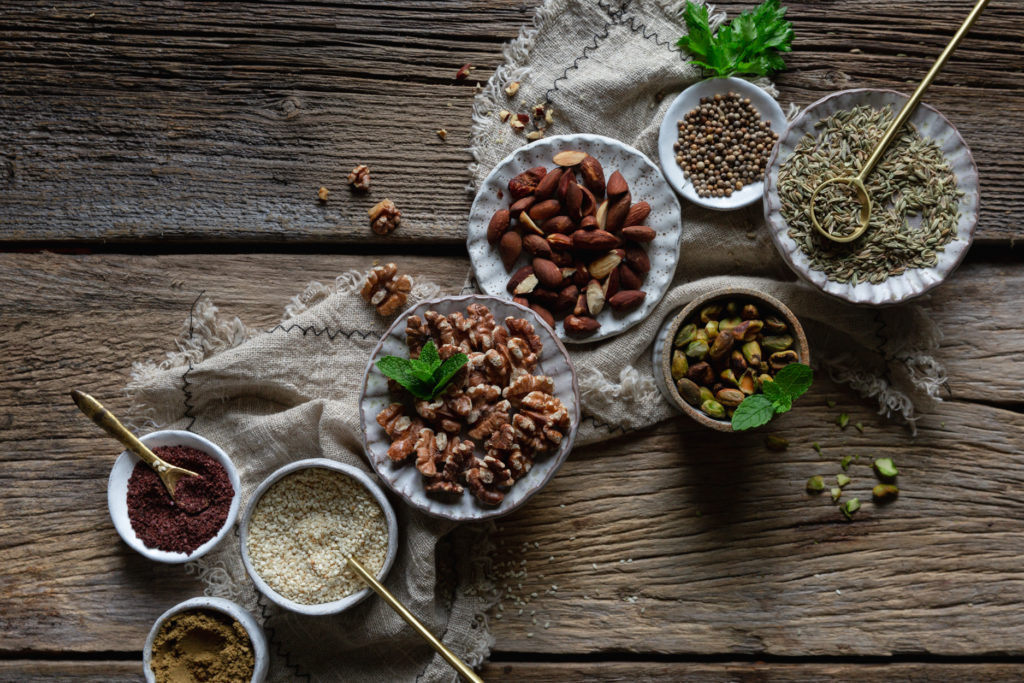
You will only need about 1/4-1/2 cup of dukkah to sprinkle over the labneh. Save the extra in the freezer and use it to coat fish or chicken for baking.
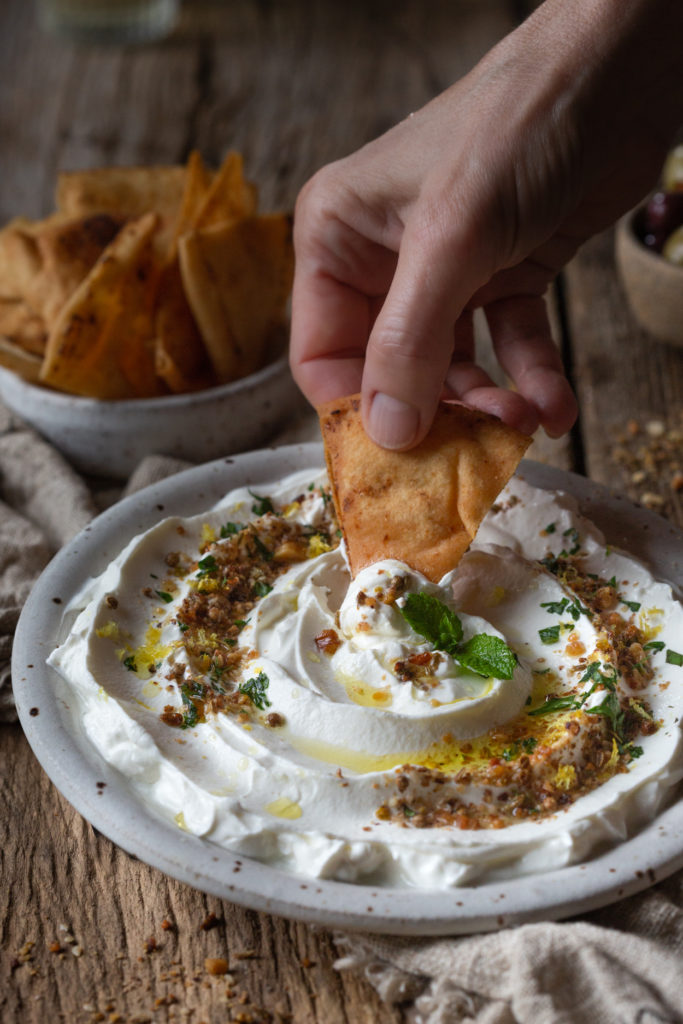
Warmed pita bread cut into wedges makes the perfect dipping companion. If you live in Ottawa, you need to buy Thyme and Again’s spiced pita chips (pictured here). They are addictive.
Add a bowl of salted nuts and some marinated olives and you have a perfect snack to serve with drinks.
